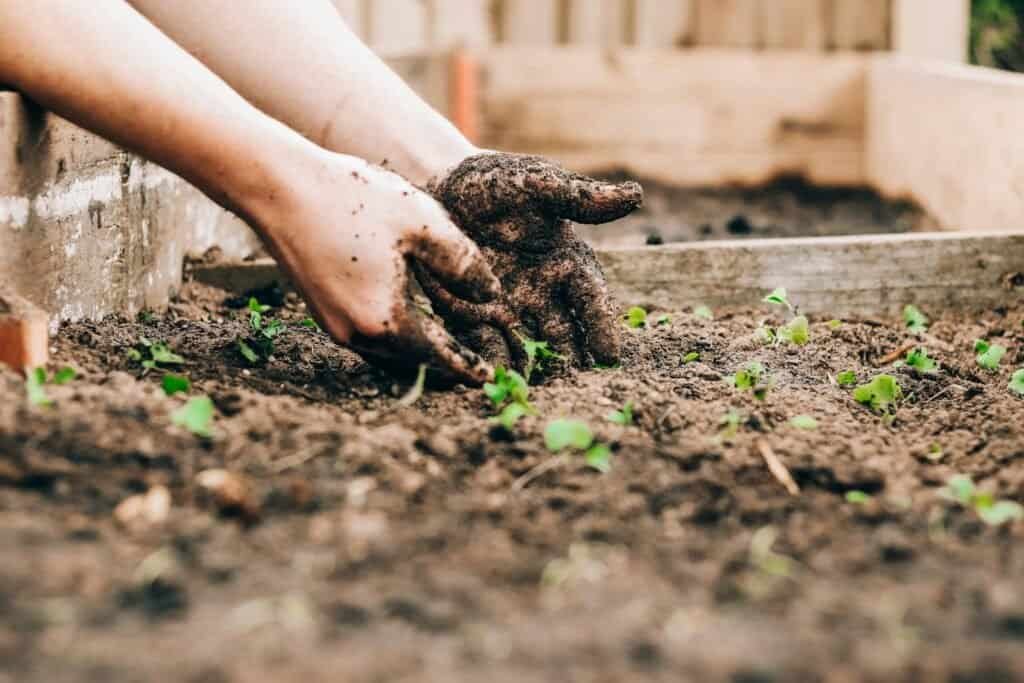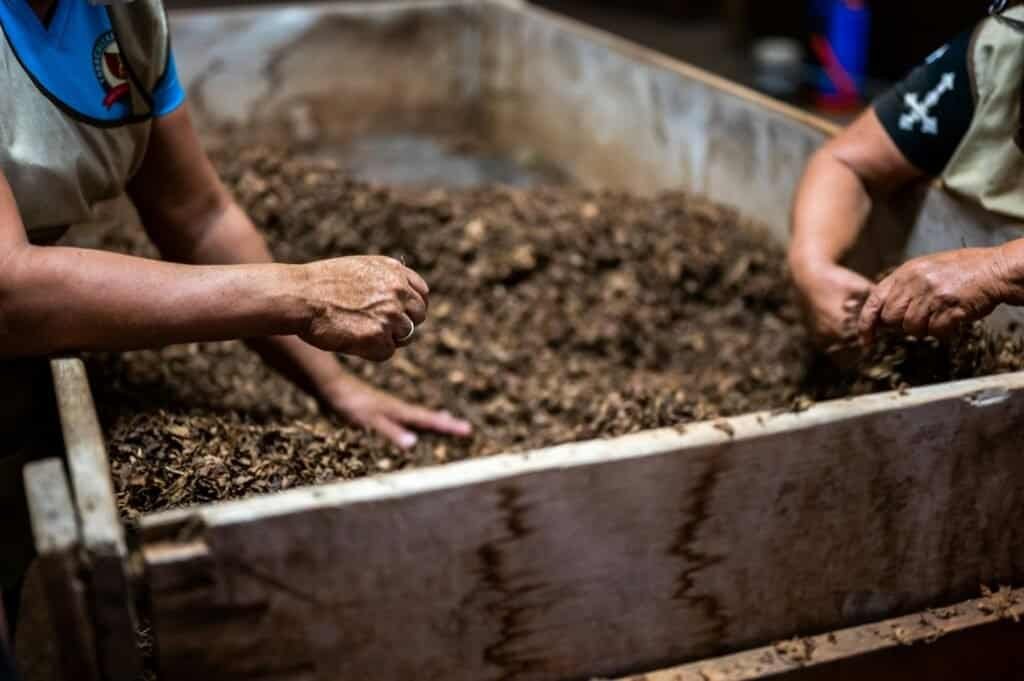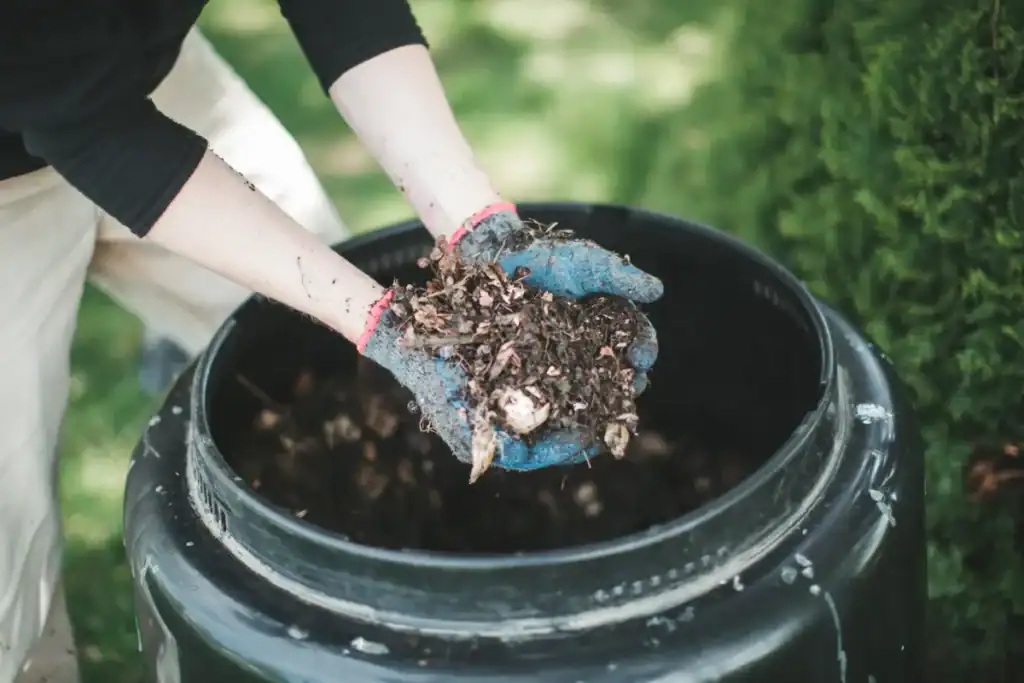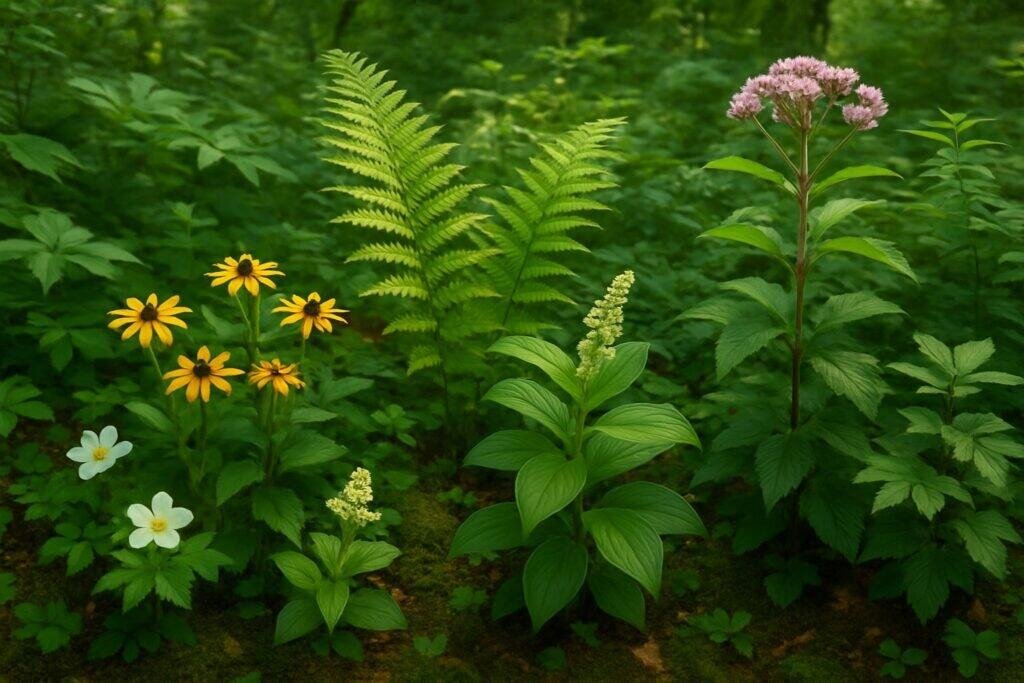Creating a successful compost system begins with understanding how to effectively layer composting materials. Commence by adding a layer of brown materials such as dry leaves, wood chips, or shredded newspaper to absorb excess moisture. Follow with green materials like grass clippings, kitchen scraps, and coffee grounds to introduce nitrogen essential for plant growth. This alternating layering process continues, adding materials until the bin signals fullness. Regular turning of the compost ensures aerobic decomposition and a steady march towards transforming organic waste into rich, nutritious compost.
The step-by-step guide to compost layering involves a careful balance of browns to greens, ensuring each layer complements the next. The aim is to create an environment conducive to the breakdown of composting materials, which is achieved through alternating layers and occasionally turning the pile. By layering or mixing appropriately, you create an efficient composting system that supports the decomposition process while contributing to robust plant growth.
Choosing the Ideal Spot for Your Compost Bin
Identifying the perfect location for your composting bin is crucial for an effective garden compost system. Look for a spot that is both convenient for adding composting materials and suitable for the final product’s use. It should be a well-drained area that receives good airflow, yet is shielded from excess wind that could dry out the pile. Accessibility year-round and proximity to the garden where the compost will be used are practical considerations that simplify the composting process.
Factors to Consider for Location and Container Type
When selecting a site for your composting bin, consider elements like sun exposure, drainage, and ease of access. A balance between sun and shade aids in maintaining the right temperature, while proper drainage ensures the pile does not become waterlogged. Opt for a composting bin that allows for efficient turning of the pile and consider a wire mesh base to deter rodents. Remember to chop or shred larger pieces to speed up the decomposition process.

The Fundamentals of Compost Layering
Effective compost layering starts with the right mix of green and brown materials. Grass clippings, coffee grounds, and fruit and vegetable scraps contribute nitrogen, while dry leaves, wood chips, and crushed eggshells provide carbon. This balance is critical for a healthy composting process.
Beginning with a Coarse Base Layer
Initiate your compost pile with a 6-inch layer of coarse materials like twigs or straw. This base allows for essential air circulation, kick-starting the aerobic decomposition that is vital for breaking down organic matter.
The first layer of your composting bin should be a layer of twigs or a similar coarse material. This allows for proper airflow, preventing the pile from becoming too dense and smelly. Incorporating kitchen scraps, a layer of garden compost, and alternating layers of green and brown materials will further promote aeration and facilitate the breakdown of brown material into beneficial compost.
Incorporating Brown Materials
Following the green layer, add a layer of brown materials such as wood chips or shredded newspaper to absorb excess moisture. These carbon-rich elements are essential for a balanced composting equation.
Incorporate fallen leaves and other carbon-rich elements into your compost bin to provide the necessary carbon for composting. These brown materials are key to a well-balanced compost that supports the overall health and efficiency of the composting process.
Introducing Green Materials
Green materials like vegetable peels are rich in nitrogen, which is essential for composting. Introducing them into your compost bin helps to create a nutritious mix that encourages decomposition.
To ensure a rich compost, include nitrogen sources such as fruit and vegetable scraps and crushed eggshells. These green and brown materials are crucial for a balanced compost that will enrich your garden soil.
The Art of Layering: Balancing Browns and Greens
The decomposition process relies on a delicate balance between browns and greens. By layering these materials correctly, you ensure a healthy composting environment.
For optimal compost composition, it’s essential to balance green and brown materials. This balance supports the microbes that break down waste and turn it into rich compost.
The Layering Procedure Explained
Building your compost pile involves alternating layers of browns to greens, ensuring a mix of materials until the bin is full. This creates an environment conducive to decomposition.
Step-By-Step Guide to Building Your Compost Layers
A compost system thrives on diversity. Start with a base of wood chips for drainage, then layer organic waste with alternating layers of greens and browns. Regularly turning the compost introduces oxygen, crucial for aerobic decomposition. Continue adding materials, maintaining a balance between wet and dry, until your composting system is full. For the best results, aerate the compost to help beneficial organisms break down food waste, retain moisture in thin layers, and ensure a steady transformation of waste into rich, nutritious compost.
How to Properly Alternate Layers for Best Results
To achieve the best composting results, begin with a layer of twigs for drainage, followed by a layer of garden compost. Continue layering brown material and layers of green and brown, ensuring each is well-integrated. This systematic approach to layering within your composting bin is essential for a rich, fertile garden compost.
To Mix or Not to Mix? Pros and Cons
Deciding whether to mix compost materials can be a pivotal choice. Mixing can speed up decomposition by distributing microorganisms and heat, but may also disturb the stratification of the composting materials. Not mixing can result in a longer composting process, yet it may preserve the essential layering structure that facilitates natural airflow and reduces the need for constant maintenance.
Turning compost is a technique used to mix and aerate the pile, promoting uniform decomposition. Ideally, compost should be turned every 4-6 weeks. When turning, move the outer layers to the center and vice versa, using a pitchfork or a compost-turning tool. This process introduces oxygen, which is crucial for aerobic bacteria to thrive and break down organic matter effectively.

Advanced Tips for Efficient Composting
For those looking to refine their composting practice, consider adding wood chips and a thin layer of soil between green and brown layers. The wood chips enhance aeration, while the thin layer of soil introduces beneficial microorganisms. Together, they can create a more efficient decomposition environment within the compost bin.
Hot Composting: Accelerating the Decomposition Process
Hot composting is a method that accelerates decomposition by maintaining high temperatures. To achieve this, ensure a good balance between green and brown materials and introduce wood chips to enhance airflow. This increases microbial activity, leading to faster breakdown of organic matter and quicker conversion to usable compost.
Maintaining Moisture and Temperature Control
Effective composting requires regulating moisture and temperature. Wood chips can help maintain air pockets within compost piles, preventing compaction and promoting circulation. Moisture levels should be akin to a wrung-out sponge, and temperature should remain steady, which can be aided by insulating compost piles with garden soil or additional brown materials to retain heat.
Tools to Monitor Compost Health
Monitoring the health of a compost pile is crucial for successful decomposition. Tools such as a compost thermometer can track temperature, indicating the pile’s microbial activity. Moisture meters measure the water content, ensuring the pile doesn’t become too dry or too saturated. Together, these tools help maintain the ideal environment for creating usable compost.
Addressing Common Layering Mistakes
One common mistake in compost layering is neglecting the carbon-to-nitrogen ratio, leading to an imbalanced pile that decomposes slowly or emits methane gas.
Troubleshooting Tips for the Composting Enthusiast
When issues arise, it’s often due to imbalances in the compost pile. If the pile is too wet, add more brown materials like wood chips. Conversely, a dry pile needs green materials or a thin layer of soil to introduce moisture. Regularly turning the pile can also help correct issues by reintroducing air pockets and redistributing materials for even decomposition.
Enhancing Your Compost with Effective Additives
Additives can significantly boost compost efficiency. Natural elements like soil conditioners and compost starters add nutrients, foster bacteria, and fungi growth, and help build a compost pile that decomposes organic matter more quickly while maintaining a balanced carbon-to-nitrogen ratio.
Natural Additives to Boost Composting Efficiency
Nitrogen-rich additives such as coffee grounds can speed up the decomposition process and enrich the final compost with nutrients.
Compost starters and worms are effective additives for a composting system. Starters introduce specific microorganisms to break down organic matter, while worms, especially red wigglers, process waste and produce worm castings, a potent soil conditioner that adds vital nutrients to the soil.

Harnessing the Full Potential of Your Compost Bin
A composting system can reach its full potential by following a step-by-step guide and maintaining the correct balance of materials, moisture, and aeration to optimize the decomposition process.
Final Layering Tips and Best Practices
For efficient composting, ensure adequate air pockets within the layers to aid in oxygenation and prevent anaerobic conditions, which can slow down the composting process and produce unwanted odors.
Sealing the Deal: Capping Off with a Brown Layer
To maintain a tidy and functional compost bin, the final layer should be brown material, like dried leaves or straw. This acts as a biofilter to minimize odors and deter flies. A layer of wood chips on top can also help absorb excess moisture and maintain a neat appearance.
Lastly, remember that the top brown layer can be replenished regularly or after each addition of green materials. This practice helps keep the compost pile balanced and efficient, ultimately leading to rich, healthy compost for garden use.
The Compost Bin Layering Conclusion: Cultivating a Greener Future
Layering your compost bin with the right balance of nitrogen-rich materials, like food scraps and plant material, and carbon-rich materials, such as dead leaves and dried leaves, is not just about creating a rich batch of compost; it’s a commitment to transforming waste into nutrient-rich soil that benefits your garden and the environment. The natural process of composting harnesses the power of composting organisms, which thrive in the heat and moisture generated by a well-maintained compost pile. By adding to your compost in proper proportions—ideally three parts brown to one part green—you encourage a steady decomposition that’s free of anaerobic pockets, speeding up the composting process efficiently.
Every gardener knows that composting involves more than just piling up organic materials; it requires regular attention, particularly the turning process to mix the materials and maintain adequate moisture content. By capping off your compost bin with a layer of soil or finished compost, you seal in the essential elements, creating an ideal habitat for the breakdown of fruit waste, peat moss, citrus peels, and even pine needles. The result is a greener future, not only for your garden, with its continuous supply of rich compost mix but also for our planet, as we reduce reliance on synthetic fertilizers and make the most of what nature provides.


